Why Is My Snake Plant Dying? Simple Solutions
If you have a snake plant (Sansevieria trifasciata), then it is reasonable to say that you have one of the strongest houseplants. It is common to assume that it can endure any amount of neglect, but it is still a plant, and if you don’t take care of it, you might come here asking “why is my snake plant dying?”.
How To Know If Your Snake Plant Is Dying
First, you need to recognize that there is a problem. We can say that your snake plant is troubled if :
- Leaves are soft and droopy
- A boggy smell coming from the pot
- Roots becoming mushy and turning to a rusty brown color instead of white
- Leaves are crisp and dry
- Tiny white pests are hiding under the leaf joints or in any other crevices which are hard to notice
- It has mealybugs, a sap-sucking insect
- It is too cold around it
Common Snake Plant Problems and Treatments
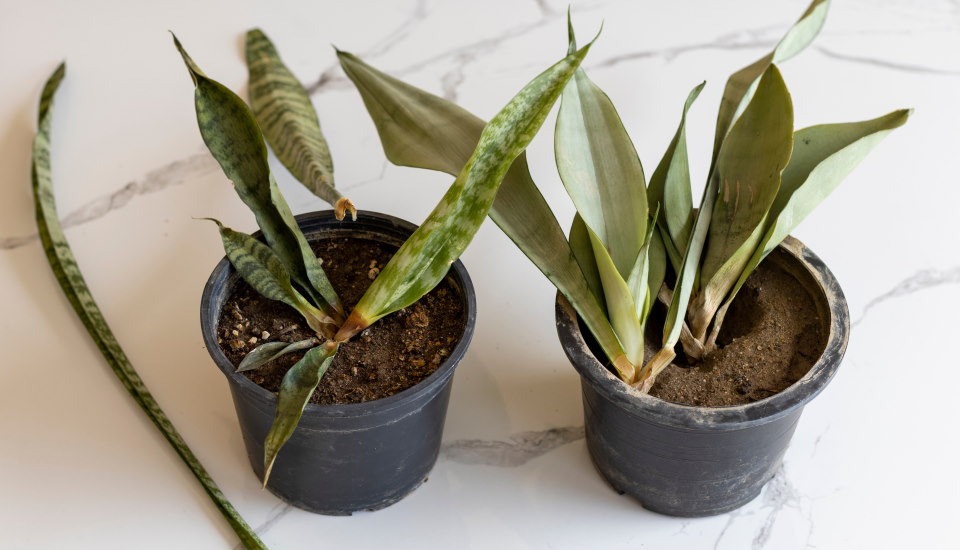
It is time to discuss some common snake plant problems and their treatments. Let’s go!
Overwatering
This is the most common problem for snake plant owners. These plants thrive in arid conditions. You must wait until the soil dries between each watering. Yellow leaves are the early warning signs to look out for. Leaves then continue to become softer and mushier as time passes, and they will start to wilt after that.
Even though what is happening above the ground is what you will be seeing, the main problem is occurring below the ground. The roots will start to rot, and it means they will stop being able to feed the necessary nutrients and minerals for the leaves.
How to Treat an Overwatered Snake Plant
After checking out the leaves for the yellowing and the soil for if it is very damp or waterlogged, you can say that your snake plant is diagnosed as being overwatered.
If the case is not too advanced, your plant will recover if you stop watering and allow the soil to dry. After that, do not overwater again and wait until it completely dries out before watering it again. It can take several days.
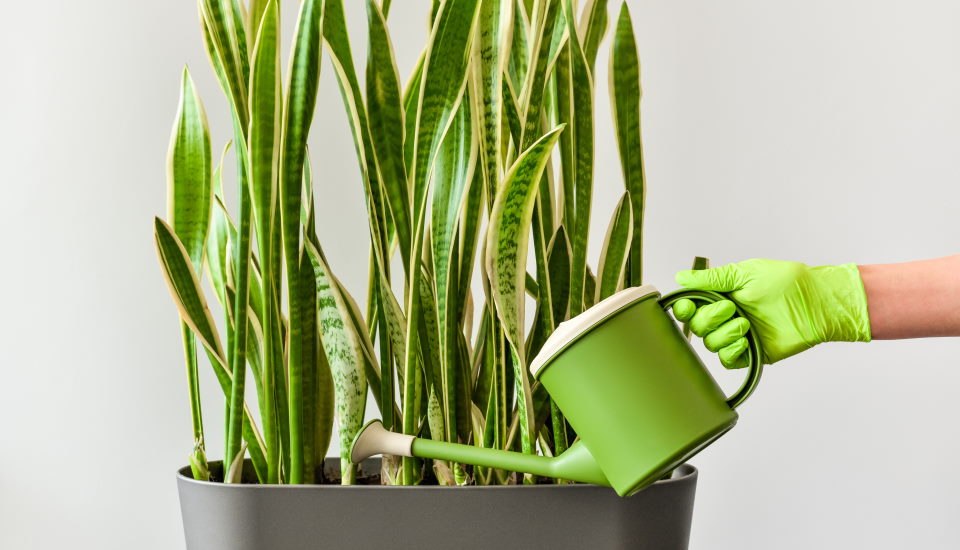
Water should be applied from the top of the soil until it drains out through the drainage holes. To ensure the soil is dry before watering again, put your finger into the soil 2 inches deep, around the second knuckle, and feel if there is still any wetness left. Do not make the common mistake of blindly following a watering schedule and check your soil every time before watering. The best way is learning to feel the soil and watering only if it becomes completely dry.
In advanced cases where the root has started to rot, the plant needs to be taken out of its pot, and the damp soil surrounding the roots should be taken out. After you take out the plant, cut away any brown, slimy, and rotting-looking root parts, lay the root ball on a sheet of paper towels or a newspaper, and wait until it dries out for several days. When the root ball is dry, you can re-plant it. Do not use the same damp soil you took out even if it dries and if you are going to use the same pot, clean it well before repotting.
Snake plants can endure underwatering very well, but they do not tolerate overwatering as much. Sometimes you should water them once every week, for two weeks, or even once a month, but water them nonetheless as the term “underwatered snake plant” exists for a reason! So definitely start to check the soil for if it is dry and do not water it randomly just to water it.
Underwatering
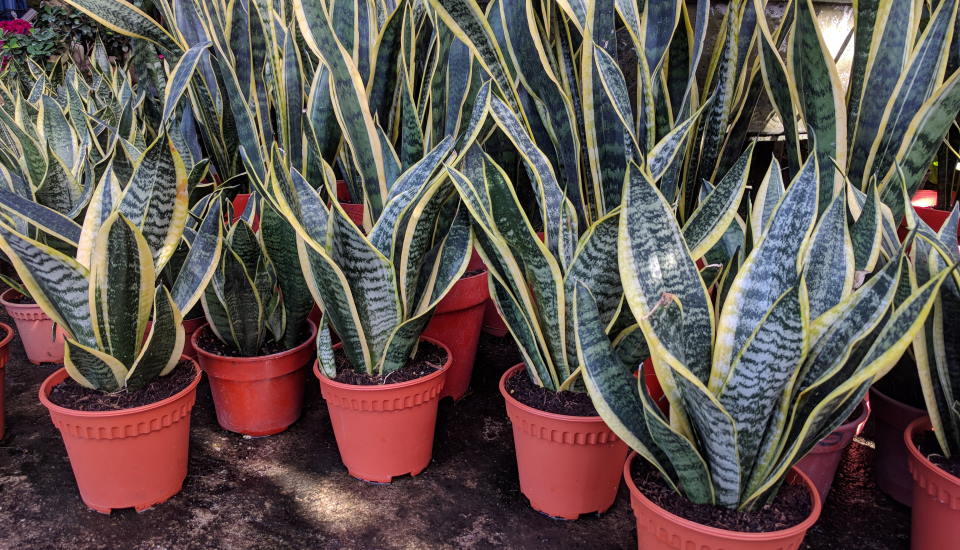
For the inexperienced query like “what does an underwatered snake plant look like?”, the signs and the symptoms of overwatering and underwatering may seem similar—yellow and wilting leaves, unhealthy appearance, etc. The main difference between the underwatered snake plant and the overwatered snake plant is when underwatered, the leaves become brittle and crisp instead of soft and droopy.
In both cases, the leaves lose their ability to transport the necessary nutrients to the plant above the ground. Another surefire way to tell the overwatered snake plant and underwatered snake plant apart is to check the soil. In underwatering case, the soil of the plant will be completely dried out and feel like dust.
How To Treat an Underwatered Snake Plant
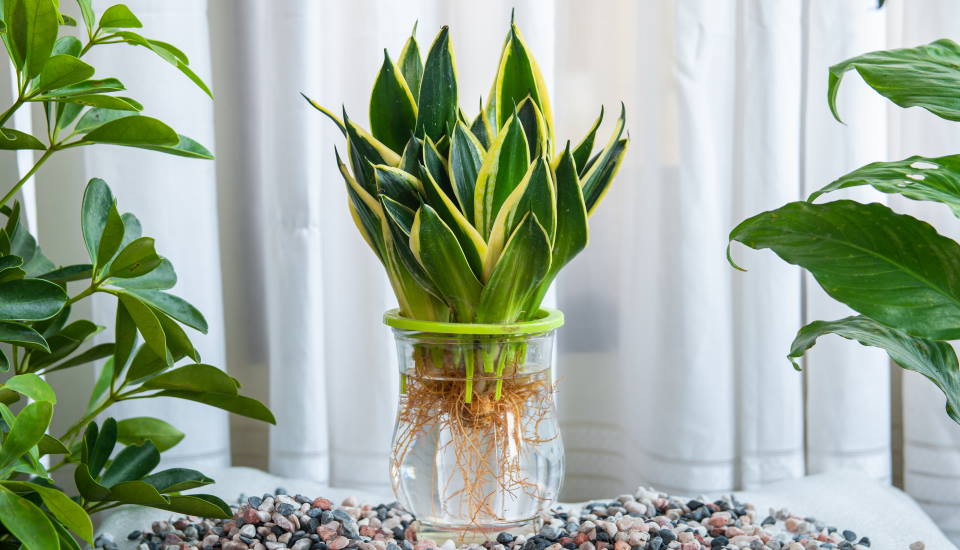
Snake plants can endure long periods without water, so they will bounce back pretty quickly as soon as you introduce healthy watering habits, but that doesn’t mean you’ll neglect it so much that it’ll become an underwatered snake plant instead of a healthy one.
You might need to check if the soil was so bad that it couldn’t hold moisture anymore after watering. If the water flows straight through and is completely dry again after several hours, then you should report your plant into new potting soil.
Poor Drainage
This is a common problem with all house plants. If the soil does not drain well, it turns into a space for many diseases and pathogens, which will cause roots to suffer. It is easy to avoid and diagnose.
Here are the things to look for when in doubt about poor drainage :
- Feel the soil. Does it feel damp or waterlogged?
- Is there any slime or mold growing on the surface?
- Does it smell like a swamp?
If your answer is yes for any of the above, then you might have a drainage problem.
How to Solve Poor Drainage Problem
Check the drainage hole in the base of the container; it should be big enough to put a finger through. This is not enough, though. The growing medium should be a quality one to ensure free draining. You can ensure this by buying soil that is specifically made for cacti or succulents.

If you cannot find a proper potting mix, you can make your own by mixing regular potting soil with perlite or grit. A common ratio is two units of perlite/grit for three units of soil. A common mistake is to place the pot in its saucer before it finished draining, in which case the saucer holds the water and causes roots to stay damp for too long. After watering, check the saucer, and if there is water in it, toss it away.
Insufficient Sunlight
It is possible that your plant is not getting sufficient sunlight, which will cause it to have problems photosynthesizing properly. If your plant cannot get enough sunlight, its leaves will start to turn yellow/brown. The difference between other symptoms of having yellowish leaves, when your plant does not get enough sunlight, it will turn yellow in multiple color variations. It is not fatal short term, but your plant will start to look ugly, and it will damage if it continues for a long time.
How to Treat A Snake Plant with Insufficient Sunlight
The Snake plant is very tolerant of low light, making it a good house plant. It will thrive in near-window areas looking north with indirect sunlight. It will also survive with direct sunlight, but it might not like it if it is too strong or is prolonged for too long.
Ideally, it is normal to put your stand in a place where it is bright but has indirect sunlight. If there is no good place for it to have indirect sunlight, you can also try artificial light. Just put it in a bright spot in your room.
Exposure to Low Temperatures
Since it is native to West Africa, Snake Plants thrive in warmer temperatures like most other succulents. Under cold temperatures, the cell walls within leaves are damaged, which interrupts the water and nutrient flows.

The ideal temperature range for Snake Plants is between 65-80 °F (18-27 °C), which is usually what we humans like too. Below 55 °F (12°C) will start to make your plant suffer. You might diagnose your plant by the scars on the leaves or yellow and mushy leaves. Again, similar to overwatered plants, you know you haven’t overwatered this time.
Pest Problems
Snake plants do not usually have pest problems due to their waxy cuticle covering their leaves. But those may be a problem with sapsuckers, and the two common ones are as follows :
Mealybugs
These are pink insects with a soft body and are covered with a white material that looks like cotton. Mealybugs live in colonies and are generally found in protected areas of your plant. For example, they may have a home near the soil and under the leaves! They look like white fluffy cotton pieces, and for the inexperienced eye, they may not even look like bugs.
You can easily get rid of them by wiping the leaves with a soft cloth with some rubbing alcohol. It is more of a problem to find them than to get rid of them.
Scale Insects
Scale insects might not look like bugs at first glance too. They might be a little stronger, and you might need to scrape them off using your fingernail or a small knife.
In both cases, these pests can be kept away by regular observation and wiping of the leaves. Regularly wiping your snake plant leaves with a semi-damp cloth will make them happy and keep them clean of pests.
Incorrect Soil pH
The snake plant is tolerant in terms of soil pH, and it can live between 4.5 and 8.5. Ideally, you would like to keep them somewhere between 5.5 and 7.5.
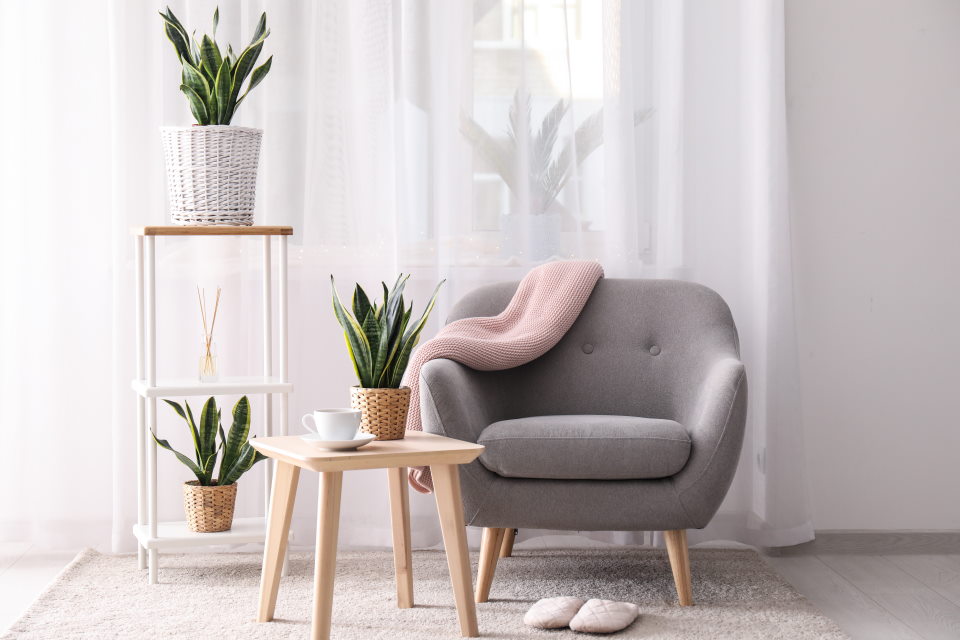
You can diagnose your snake plant by checking the yellowing between the veins, which is caused by insufficient iron uptake. If you are concerned about this situation, you can buy a soil testing kit and check the pH levels of your soil.
Low Humidity
Even though the snake plant comes from arid conditions, it is possible that you have humidity levels below their ideal requirements. Heating systems are the main cause of this.
It is not a fatal condition short-term, so you don’t need to run and buy a humidifier. You can :
- Put your plants together and let them create their mini climate, which will help them share their transpiring humidity.
- Put some small pebbles on your plant saucer and pour a little bit of water over them. This way, your plant will stay out of the water, but the water will help with its humidity while evaporating on its own.
Dormancy
Dormancy is a period all plants go through in which their metabolism slows down, and they grow a lot slower. This period may seem like your plant is troubled. Usually, this occurs during the winter months for the snake plants. You can expect your snake plant to go through dormancy between October and March in the northern hemisphere.
The reason it is important is during dormancy, your plant will need much less water and almost no fertilizer in this period. Keep feeling the soil with your finger before watering, it probably will need half of the water it needs during the growing season.
Insufficient Nutrients in the Soil
If your snake plant is in a pot, sooner or later the pot will run out of the necessary nutrients. This will cause your snake plant to grow slower and overall look unhealthy.
- You simply need to add fertilizer to your potting mix to overcome this problem. Snake plants usually need very little supplementary feeding, but this doesn’t mean they do not.
- Use a houseplant fertilizer and feed according to the recommendations on the package and not anymore.
- Do not give fertilizer during the dormancy period.
Root Bound
Snake plants become root-bound when their root completely fills the pot they are in, and there is no more space to grow or breathe.
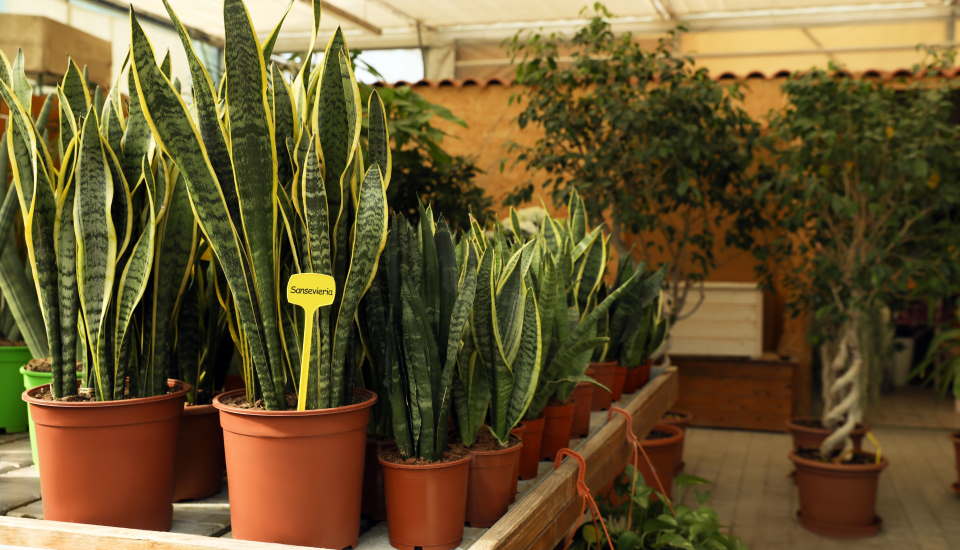
This will have a negative effect on the soil’s ability to hold moisture and nutrients, and eventually signs of unhealthiness will appear. Usually, snake plants are happy even with really tight roots.
Signs that show you need to report your plant into a bigger pot include:
- Roots coming out of the drainage holes or over the brim of the pot
- Bulging of the pot at the bottom or sides
In this case, you should report your plant into a bigger pot.
How To Report Your Snake Plant
If your snake plant shows signs of outgrowing its pot, you should report it into a bigger container. Here is how to do it:
- Take the plant out of its pot and check the root for any rotting that may have happened. If there are any brown, yellow or rusty colored roots, cut them off until you reach the white and clean root.
- Plant your pot into a new and bigger container, use a potting mix that we have discussed previously.
You probably don’t need to water immediately, the soil may have enough moisture to last for a couple of days. After that, check the soil as previously described and water accordingly.
As mentioned, you need to keep your snake plant in bright but indirect light. If your plant is trying to come back from a near-death situation, it is essential to provide optimum conditions. Too much light can create stress in this fragile condition to avoid such a mortally distasteful question as “why is my snake plant dying?”
Snake Plant Propagation
If your snake plant is severely infected with a root rot, then propagation is the only way to come back from that.
If the root rot is established, you may not be able to save the whole of your plant. When cutting away the rotted roots, you may not be able to find healthy material and even discover that the rot has extended up into the leaves. This doesn’t necessarily mean that your snake plant is done. Continue cutting off the rotted parts from the base of each leaf bit by bit.
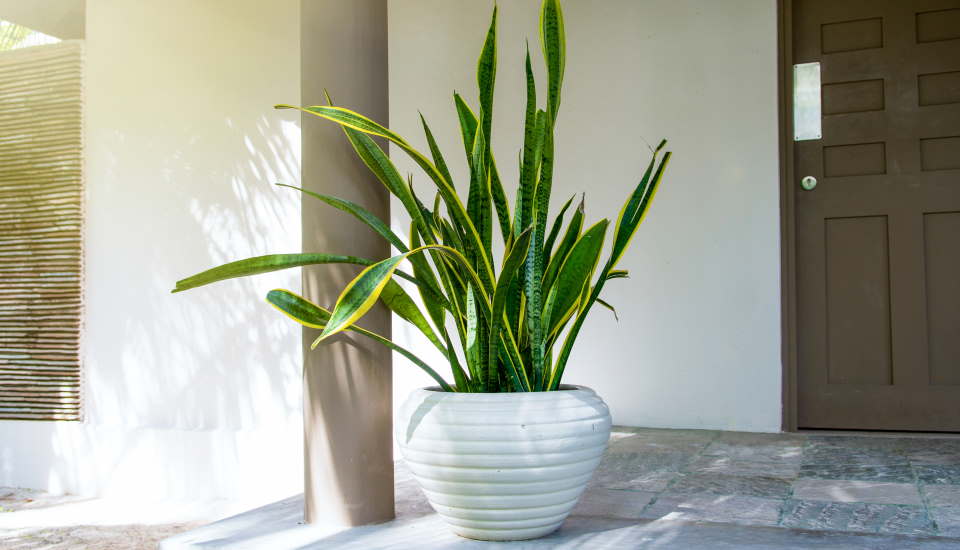
Sooner or later, we hope that you will reach healthy material. You now are going to propagate the remains of your plant with that healthy material.
Note that many tools that you may have used, like secateurs are now carrying disease. You must clean them with alcohol before using them again on healthy plant materials.
Place your cutting or cuttings of healthy plan material into a clean container of water in a way that the water covers about one-quarter of the cutting. Please keep it in a bright place and replace the water once a week.
After around four to six weeks, the first roots will start to appear. Keep the snake plant in the container for another three to four weeks, so a total of 2-3 months, until the roots come stronger and bigger.
After that, your cuttings are ready to be planted into pots, preferably using a cactus mix potting medium. Keep the potting mix slightly moist but not completely wet, and keep the snake plant under bright but not direct light conditions.
Conclusion
Snake plants are really tough plants and most of the things you have read here are rare occurrences and worst-case scenarios. Usually, these plants are hassle-free, but it is important to follow the basic principles. To recap:
- Do not overwater your snake plant, only water when you feel the soil is completely dry
- Keep the plant in its ideal temperature range, cold temperatures are more dangerous than hot temperatures
- Keep your snake plant in bright but indirect light
- Use a free-draining potting
You can learn more about snake plant from here:
